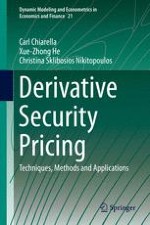The book presents applications of stochastic calculus to derivative security pricing and interest rate modelling. By focusing more on the financial intuition of the applications rather than the mathematical formalities, the book provides the essential knowledge and understanding of fundamental concepts of stochastic finance, and how to implement them to develop pricing models for derivatives as well as to model spot and forward interest rates. Furthermore an extensive overview of the associated literature is presented and its relevance and applicability are discussed. Most of the key concepts are covered including Ito’s Lemma, martingales, Girsanov’s theorem, Brownian motion, jump processes, stochastic volatility, American feature and binomial trees. The book is beneficial to higher-degree research students, academics and practitioners as it provides the elementary theoretical tools to apply the techniques of stochastic finance in research or industrial problems in the field.
